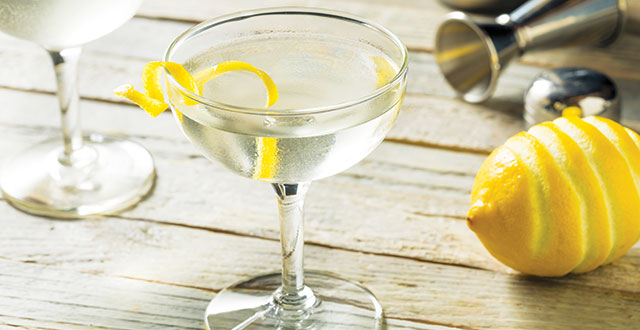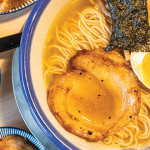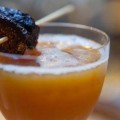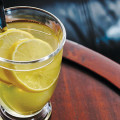I’ll be blunt: You’ve probably never had a real martini. Like the beloved hamburger, the martini is universally loved but instantly modified. The tradition of customizing could have more to do with pop culture and less to do with preference.
Let’s look at what a martini is and then we’ll discuss whatever that thing is you’ve been drinking.
The martini has several possible origin stories. One generally accepted theory is that it evolved from a cocktail called the Martinez sometime in the late 1800s.
The Martinez combined Old Tom gin with sweet vermouth, bitters and a dash of maraschino liqueur with a lemon-twist finish. Some of the earliest printed recipes for the martini date from the early 20th century. These recipes call for Plymouth gin, Chambray vermouth (French dry vermouth) and orange bitters, finished with a lemon peel.
Fictional spy and all-around drunkard James Bond is known for ordering a martini with instant modifications: “vodka martini; shaken, not stirred.” Unfortunately, 007 got it very wrong.
Let’s look at that order: “vodka martini” is a modifier, as the drink should be made with gin; “shaken, not stirred” is another modifier, as any spirit-forward drink ought to be stirred. In the practice of proper drink preparation, any cocktail containing a “cloudy” ingredient (citrus, eggs, cream) should be shaken, whereas a cocktail with all clear ingredients (spirits, vermouth, etc.) should be stirred. For many, Bond’s way became the default. I’m here to set the record straight.
Now let’s talk about vermouth. A necessary component of the drink, it’s woven into the very fabric of what a martini is. To be very brief, vermouth is essentially a wine-based amaro. There’s far more to it, but bear with me. The botanical blend of vermouth pairs effortlessly with the botanical blend of gin. Without that symbiosis, the martini would never have come to be. Tannins from the wine give an astringent quality to a martini making it dry—get it? The dryness of a martini is dependent on how much—not how little—vermouth is present in the final mix. Fancy that.
The ratio of gin to vermouth can be debated. Some historians vouch for the 1-to-1 ratio and others swear by the 2-to-1. In my experience the 5-to-1 ratio is the ticket. Although I personally love a 50-50 mix, I serve a 5-to-1 martini as a “baby step” toward reintroducing finer quality vermouth to my guests.
Lastly, let’s talk about the garnish. Olives are largely ornamental, but a proper garnish should be functional. A little expression of oil from the peel of a lemon swath adds aromatics, brightness, some mouthfeel, and after sitting in the cocktail, a slight touch of bitterness from the pith.
Jason Seele, bar manager of Los Gatos Soda Works, is no slouch when it comes to cocktails. Over the years he has won competitions around the country for his knowledge, expertise and presentation. I asked for his thoughts on the martini and he had this to say: “To me, a proper martini needs to find balance between the selection of gin and the vermouth. Jumping from a London dry gin to an Old Tom–style gin will require different vermouth to achieve that balance.”
Balance is extremely important in all cocktails, including the spirit-forward martini. Seele’s ideal 6-to-1 martini is three ounces Plymouth gin and a half-ounce Carpano dry vermouth, stirred down to 32 degrees and garnished with an expressed lemon peel.
Some guests order filthy martinis. Some order extra, extra dry martinis. My friend Bryan Ferguson used to order “dirty old man” martinis after service—a rocks glass full of ice and gin topped off with olive juice. (I’m going to miss that order.)
At the end of the day, I know pontificating upon a person’s drink of choice—especially if I’m telling them they’re doing it wrong—is no way to win hearts and minds. Shaken, stirred, dirty, dry—don’t let me rain on your parade. Still, now that you know how a true martini is made, I suggest you try it the right way before trusting a globetrotting secret agent so hard-headed he always tells the bad guys his real name.
Syrus Fotovat is a veteran bartender and currently serves as Bar Manager at Braise in Willow Glen.
The Martini
2 ½ ounces gin
½ ounce dry vermouth
1 dash orange bitters
lemon swath for garnish
Stir with ice. Strain into a chilled cocktail glass. Express the oil from a lemon peel and garnish.

 Cupertino's Afuri Ramen + Dumplings Delights with Unique Take on Traditional Dish
Cupertino's Afuri Ramen + Dumplings Delights with Unique Take on Traditional Dish  Vietnamese Pop-Up Kitchen Het Say Rewards Those who Seek it Out
Vietnamese Pop-Up Kitchen Het Say Rewards Those who Seek it Out 


